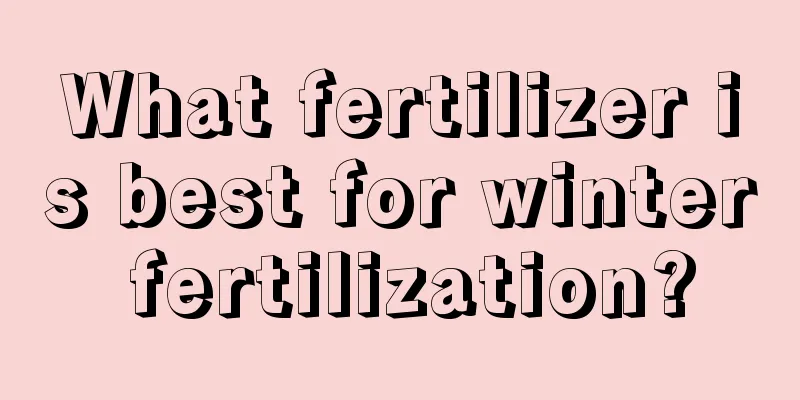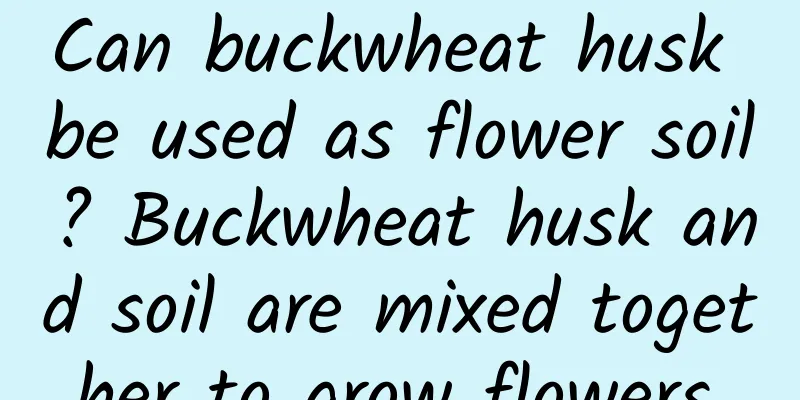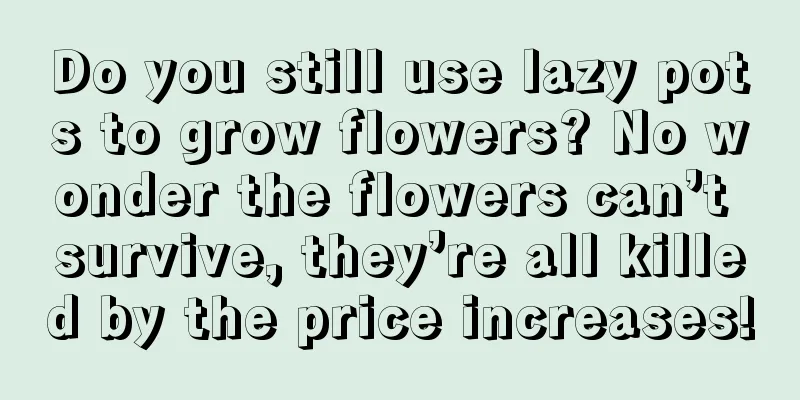What fertilizer is best for winter fertilization?

|
Fertilizing in winter is a technical job and it cannot be done by simply spreading some fertilizer . Each fertilizer has its own characteristics and is suitable for different plants and growth stages. So what kind of fertilizer is best for fertilizing in winter? Let’s take a look below. 1. What kind of fertilizer is best for fertilization in winter? 1. Slow-release fertilizer : Slow-release fertilizer releases nutrients very slowly in a low-temperature environment, and can continuously provide nutrients to plants without causing fertilizer damage. It is suitable for fertilizing dormant flowers and plants in winter. It can be used by shallow burial or sprinkling on the soil surface, but it is recommended to keep it a little away from the root system to prevent root burn. It is also a good choice to mix it into the soil when repotting. 2. Organic fertilizer : Organic fertilizer has a mild and long-lasting fertilizer effect and contains a large number of beneficial bacteria. It can activate the soil and improve the plant's resistance to cold. Suitable for application to flowers and plants in late autumn and winter, especially in areas with lower temperatures. Organic fertilizers can revitalize the soil, make it loose and breathable, and lay the foundation for plant growth and flowering next year. 3. Sheep manure fertilizer: Sheep manure fertilizer is rich in nutrients such as nitrogen, phosphorus, potassium, etc. It has a long-lasting and stable fertilizer effect and is suitable for winter fertilization. It can improve soil structure, enhance air permeability and improve the plant's resistance to cold. Fermented sheep manure fertilizer is odorless and tasteless and is suitable for use on various plants. 4. Phosphorus and potassium fertilizers: Phosphorus and potassium fertilizers can help plants enhance their cold resistance and promote branch growth and flower bud differentiation. Using phosphorus and potassium fertilizers, such as potassium dihydrogen phosphate, in winter can make the stems of plants thicker and greatly improve their frost resistance. When using, the dosage should be less than in spring to avoid burning the seedlings. 5. Ammonium urea: In winter when the temperature is low, ammonium urea is not easy to volatilize and decompose, which is beneficial to improve the utilization rate of fertilizer. Ammonium carbonate is an ammonium nitrogen fertilizer. After being applied into the soil, it can be directly absorbed and utilized by crops. It has a fast fertilizer effect and is suitable for topdressing in wheat fields in winter. 2. The importance of fertilizing flowers in winter 1. Supplement nutrients and reserve energy Although many plants enter a dormant state in winter, root activity does not completely stop. Appropriate fertilization can reserve energy for the plants and support rapid growth in spring. Nutrient supplementation is particularly important for evergreen plants or varieties that still bloom in winter (such as camellia and Christmas cactus). 2. Improve cold resistance Adequate nutrients can enhance the plant's resistance to cold, help it better cope with low temperature environments, and reduce the risk of frost damage. 3. Prevent yellow leaves from falling off In winter, the temperature drops and the light is insufficient, so plants are prone to yellowing or falling leaves. Proper fertilization can improve soil conditions and alleviate plant nutrient deficiencies. 4. Promote root health The root system is the key part of the plant overwintering. Proper maintenance can lay a good foundation for growth in the next year. Improving the soil environment through fertilization helps the root system maintain normal absorption function. 3. Difficulties of fertilizing in winter 1. Fertilizers in the soil are released slowly Low temperatures in winter slow down the activity of soil microorganisms, and the fast-acting ingredients in fertilizers are difficult to be quickly absorbed by plants, which can easily cause waste or fertilizer damage. 2. Plant absorption capacity weakened In a low temperature environment, the metabolic activity of plants slows down and their ability to absorb nutrients is greatly reduced. Improper use of fertilizers may cause stress to the root system. 3. Increased risk of fertilizer damage High concentrations of fertilizers can easily cause damage to plants in winter, especially some chemical fertilizers, which can burn the roots due to being released too quickly, causing plant growth to stagnate or even die. That’s it |
<<: Open-air cultivation technology of Qilin watermelon
>>: How to care for and water June Snow?
Recommend
How to grow Podocarpus thicker but not taller
1. How to grow thicker but not taller Podocarpus ...
What is the best month to plant winged beans?
When to plant winged beans Winged beans are usual...
The best way to propagate bougainvillea: how to propagate bougainvillea with a 100% rooting survival rate
First water planting and then soil planting The b...
How is moss formed? How to grow moss in flower pots
1. What is moss Moss is a type of plant. It is th...
Reasons why the tips of gardenia leaves turn brown
1. Excessive watering Reason: The leaf tips of ga...
How to prune Phoenix bamboo
Pruning time of Phoenix bamboo Phoenix bamboo can...
Flower boxes and flower stands…not enough? Other people’s husbands do it themselves, I’m so envious and jealous!
Husband brand flower box Sometimes, the flowerpot...
When to plant violets
When to sow The time for sowing violets is genera...
How to transplant succulents so that they change color (steps for beginners to grow succulents)
How to transplant succulent plants There are usua...
Cultivation methods and precautions of golden plum (care and management of potted golden plum)
The Chinese name of Golden Plum is Double-Pod Cas...
Hairy crab breeding technology
The Chinese hairy crab , a freshwater crab produc...
What is the most effective drug for red spider mites? How to prevent and control it?
1. Which medicine is most effective? It is a kind...
Hydroponic method of rubber tree
Hydroponics Method The hydroponic method of rubbe...
What should I do if the leaves of the weeping angel have become soft?
1. Reasonable exposure to light The weeping angel...
How to propagate kapok by grafting
Kapok grafting time The most suitable time is Feb...









